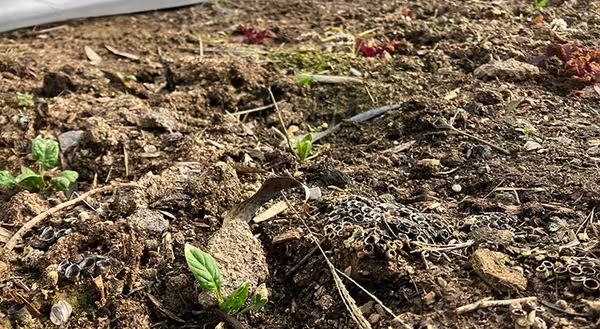
Rain, rain, glorious rain!!! We are happily finally getting some much-needed rain in quantities that actually can help us recover the depletion of soil moisture from over the first month of this year. The nice part is that it really is not hampering any major field activities right now so that is good. So far this year as of January 29 I have had 5.28” of rain. This is more rain than we have had for a month in quite some time. Included in our precipitation was 4” of snow that fell late night January 5 into the morning of January 6. The nice part is this precipitation has come fairly slowly as good soaking rains. Most of the rain had fallen on non-frozen ground and always less than 1” in a given day. We endured significant cold over the last couple of weeks with multiple days well below freezing. The coldest air temperature I observed was -6° but there were a few days that we could not even climb up above 0. The last week we have gotten a reprieve in the temperatures and have had highs back up in the 40s with some 50s promised at some point in the near future. The long-range temperatures are forecasted to stay at or above freezing for the next week.
Out in the field not a lot is going on. Pruning, farm clean up and equipment repairs and upgrades are common, but even some of those things slowed down some in the cold (unless you have a nice, heated shop). High tunnels and other crop protection has kept good harvests on greens and other cold weather crops. Most had a layer or two of row cover even inside a tunnel for protection, but with that most were able to keep a crop through the weather.
Now we are always thinking about varieties as we order seeds. Remember the Midwest Vegetable Trial Report is always a great resource for seeing research reports from various university researchers around the Midwest. This can be a great way to see how new varieties might compare with older standards to help guide your selections.
As of the first of this year, I have started participating in the Community Collaborative, Rain, Snow, & Hail Network (CoCoRaHS). This is a great way to contribute to a better understanding of local precipitation patterns and document local rainfall variability. The data from this is used by meteorologists and scientists, including our State Climatologist, Trent Ford. I have been interested in participating for a long time but was inspired by the variable rainfall from 2023 and wanted to do what I could to help document that. Anyone can participate as long as you purchase the standard rain gauge required. We submit rainfall totals every day, rain or no rain, at the same time each day. They also have a phone app which makes the daily report as easy as just a few seconds to open your device and submit. We all watch the rain on our farms, and I would encourage you to consider signing up. They also have many ways you can view and get reports from your data and anyone can go online to see rainfall reports from reporters all across the country. Just click “Join CoCoRaHS” on the website to apply and learn more!